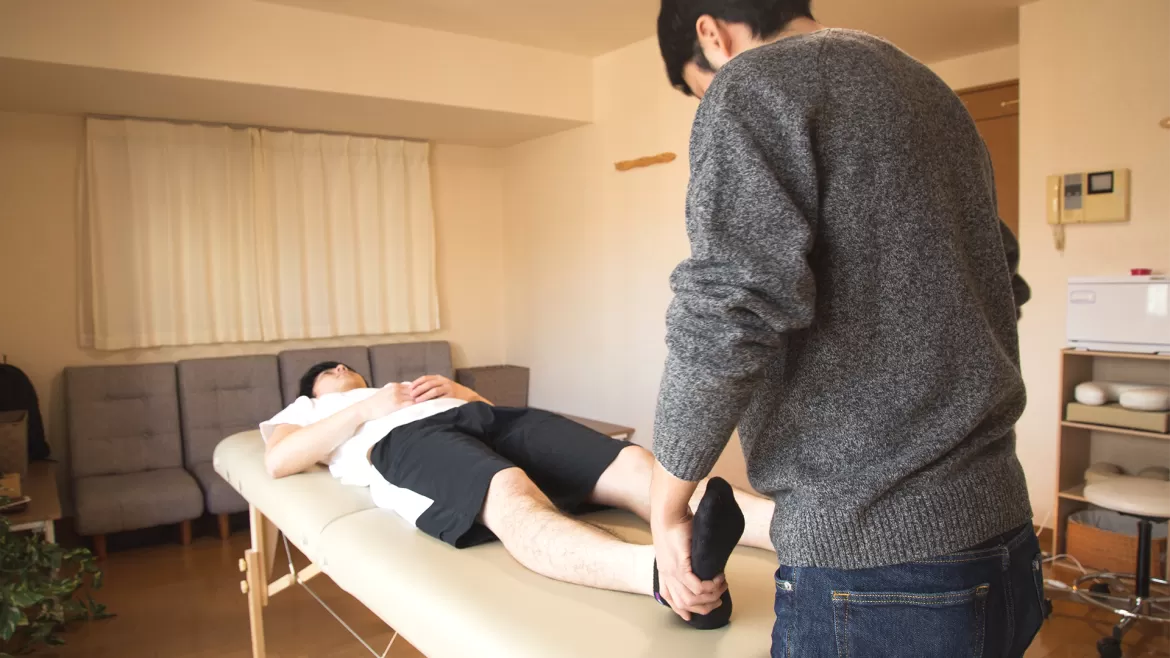Imagine a world where consciousness is elusive, where a loved one is present but unreachable. This is the stark reality for coma patients and their families. Comas, characterized by a profound lack of awareness and response to stimuli, can be the result of severe head trauma, significant medical events like strokes, or even deliberate medical intervention. Amidst this, physiotherapy emerges as a vital component of care—its role extends beyond preserving physical functions to ignite the spark of consciousness potentially. This post intends to delve into the depths of Coma Patient Physiotherapy Treatment, offering insights into its techniques, the science behind its strategies, and the profound difference it can make in the journey towards recovery.
Understanding Coma
A coma is more than just a deep sleep; it’s a state of deep unconsciousness where the patient exhibits minimal to no voluntary activities or responses to the environment. The Glasgow Coma Scale is typically employed to estimate the harshness of a coma based on verbal, motor, and eye-opening reactions to stimuli. Causes vary widely, from traumatic brain injuries and strokes to infections and metabolic imbalances. The type of coma directly influences the physiotherapy approach—whether it’s a short-term, medically induced coma where full recovery is expected or a long-term coma resulting from severe brain damage.
Goals of Physiotherapy in Coma Patients
Physiotherapy aims to prevent the complications of prolonged immobility in coma patients. These goals include maintaining muscle mass and joint range of motion, preventing contractures and bedsores, and providing sensory stimulation that may encourage a return to consciousness. The therapeutic touch and movement offered by physiotherapy not only maintain the health of the patient’s body but also provide a connection to the outside world, which could be crucial in the recovery process.
Assessment of Coma Patients for Physiotherapy
Before beginning any physiotherapy, a comprehensive assessment is critical. This includes evaluating the patient’s current level of function, potential for recovery, and any contraindications to therapy. The evaluation is a collaborative process, often involving neurologists, intensivists, and nursing staff, to ensure a safe and effective treatment plan. Safety precautions are paramount, as coma patients can have unpredictable responses to sensory input and movement.
Physiotherapy Techniques and Strategies
Physiotherapy for coma patients typically includes passive range-of-motion exercises to keep joints flexible and muscles from shortening and atrophying. Specialized techniques like proprioceptive neuromuscular facilitation may stimulate nerves and muscles. Using tilt tables helps to reintroduce the patient’s body to a vertical position, facilitating blood pressure regulation and preventing orthostatic hypotension. Sensory stimulation, such as playing familiar sounds or introducing specific scents, can be part of a multi-sensory approach to therapy, with the goal of eliciting responses and engagement from the patient.
Challenges in Treating Coma Patients
The primary challenge in treating coma patients is the uncertainty of their perception and the subtlety of their responses. Physiotherapists must be highly skilled in observing for any signs of change. The emotional toll on the families witnessing these slow and often minor improvements can be substantial, and they require support and realistic hope. Additionally, adapting treatment plans as the patient’s condition changes can demand a high level of clinical judgment and flexibility from the therapy team.
Case Studies
Detailed case studies serve as valuable educational tools, highlighting specific patient journeys. For example, a case study may chronicle the progress of a young adult who entered a coma after a car accident, detailing the physiotherapy interventions—such as passive limb movements, upright positioning to promote lung function, and family-assisted sensory stimulation—and the milestones achieved over time.
Collaborative Care Approach
The complexity of coma patient care necessitates a multidisciplinary approach. Regular team meetings to discuss the patient’s progress, challenges, and adjustments to the treatment plan are essential. The role of the family is also highlighted, as they often provide the constant and familiar presence crucial for a patient’s psychological well-being and recovery.
Advances in Coma Patient Physiotherapy
The field of physiotherapy is continuously evolving, with new research and technology offering promising avenues for enhancing patient outcomes. Innovations such as robotic-assisted movement therapy and virtual reality stimulation are being explored for their potential to provide more engaging and effective treatments for coma patients.
Conclusion
The intersection of physiotherapy and coma recovery is complex and deeply human. As we’ve explored, the role of physiotherapy extends beyond the mechanical maintenance of the body—it’s a form of communication with the patient, an affirmation of their humanity, and a persistent call back to consciousness. As science advances, so does our hope for awakening even the quietest minds.
FAQs on Coma Patient Physiotherapy Treatment
Q: What is physiotherapy’s role in treating coma patients?
A: Physiotherapy plays a critical role in maintaining the physical health of coma patients by preventing muscle atrophy and joint stiffness, reducing the risk of pressure sores, and providing sensory stimulation that may aid in regaining consciousness.
Q: How often is physiotherapy given to coma patients?
A: The frequency of physiotherapy sessions can vary depending on the patient’s condition, the goals of therapy, and the medical team’s assessment. Typically, it could range from daily sessions to a few times a week.
Q: Can physiotherapy help a coma patient regain consciousness?
A: While physiotherapy primarily aims to maintain physical function and prevent complications, sensory stimulation during therapy may contribute to arousal and help a patient regain consciousness. However, this is not guaranteed and varies from case to case.
Q: What are some physiotherapy techniques used for coma patients?
A: Techniques include passive range of motion exercises, positioning and repositioning schedules, use of tilt tables to aid in vertical positioning, and multi-sensory stimulation, such as tactile, auditory, and visual stimuli.
Q: Are family members allowed to be involved in the physiotherapy process?
A: Family involvement is often encouraged as it can benefit both the patient and the family. They can provide emotional support, familiar voices, and personalized care under the guidance of a physiotherapist.
Q: Is physiotherapy safe for all coma patients?
A: Physiotherapy is tailored to each individual’s needs and condition. A thorough assessment is conducted to ensure the safety and appropriateness of physiotherapy interventions for each coma patient.
Q: How do physiotherapists measure progress in coma patients?
A: Progress is measured through physical responses, changes in muscle tone, joint mobility, and any signs of increased responsiveness or arousal. The Glasgow Coma Scale may also be used to monitor changes in neurological status.
Q: What new advances are there in physiotherapy for coma patients?
A: Advances include using technology such as robotic-assisted devices, virtual reality for sensory stimulation, and research into more effective stimulation techniques to encourage responsiveness.
Q: Can physiotherapy continue after a coma patient wakes up?
A: Yes, once a patient regains consciousness, physiotherapy continues to be vital in aiding their rehabilitation, helping to restore strength, mobility, and function as part of the recovery process.
Q: What challenges do physiotherapists face when treating coma patients?
A: Challenges include determining the patient’s level of perception, adjusting therapy to minimal responses, preventing overstimulation, and managing the emotional strain on families and caregivers.




